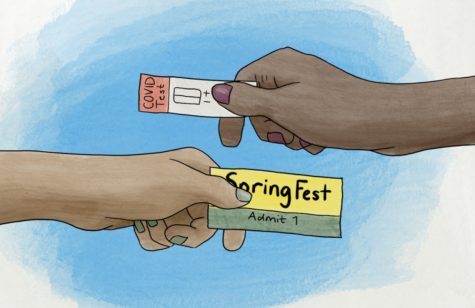Racism can be subtle, too
Many people are aware of the recent scandal at University of Oklahoma, where members of the Sigma Alpha Epsilon fraternity were secretly videotaped singing racist chants.
This caused a lot of controversy, but more importantly, people seemed to remove themselves from their own internalized racism and ended up dumping it all on those guilty at OU. This is a clever move, but when racism comes out in ugly, loud ways like this, we should not be fooled into thinking that racism is more prevalent there than anywhere else, particularly in our very own state of Vermont.
In the short amount of time that I have lived in Vermont, I encountered something that I did not expect. Internalized racism — the unconscious notion in one’s mind that other races are inferior in some way — is something that I knew existed everywhere, but the state’s public image fooled me into thinking that it was more progressive than the rest of the country, or indeed the rest of the world.
Contrary to my falsely held presupposition, Vermont is not as done with the business of racism as I had been led to believe.
Veiling racism is an elaborate art, performed most effectively by those who live in areas that are known for tolerance toward racial minorities. There are areas, stereotypically in the South, that are known for being more explicitly bigoted, but at least those who live in these areas have the merit of being honest.
In some ways, their liberal counterparts can be considered more detrimental to the cause of racial equality, because when they are told to deal with their internalized racism, their first response is to deny that it exists in the first place. Being part of Vermont’s culture entails having an inherent belief that if you’re from here, you’re “one of the good ones.” Vermonters don’t have to deal with racism; that battle is long gone.
It’s Texas and Alabama that have to deal with their racism. Vermont has moved on to more current topics, like environmentalism and hockey — or so we’re told. Therefore, because people here are brought up to believe that they’re incapable of being racist, their bigotry displays itself in less explicit ways, but clear nonetheless to non-whites (which, of course, is why it is never said around them).
It comes out in phrases like “I would never date a black girl, you know, as a personal preference,” or “She is gorgeous for a Mexican,” or “You’re not really black. You’re like an Oreo: black on the outside, white on the inside.” To someone who is used to this behavior, this doesn’t seem like internalized racism.
But that’s exactly what makes it internalized. If these views aren’t addressed directly, harmful perceptions of minorities are unlikely to change. The actions of the Sigma Alpha Epsilon fraternity should not be perceived as isolated. It is only one of the louder, more ugly manifestations of a viewpoint that has existed for a long time, and that manifests itself more often in subtle ways.
As long as this happens, we will still be dealing with racism that affects minorities in ways white people will never see. This should cause us to make a valiant effort to attack this viewpoint as heavily as we can, so that we can live in a truly equal and transparent society, one in which everyone is truly seen as equal and valuable, regardless of their skin color or heritage.











